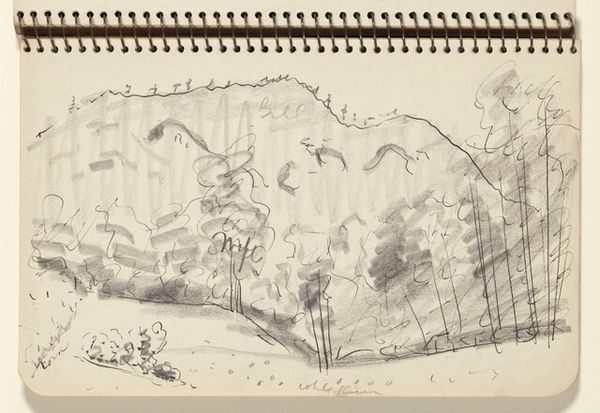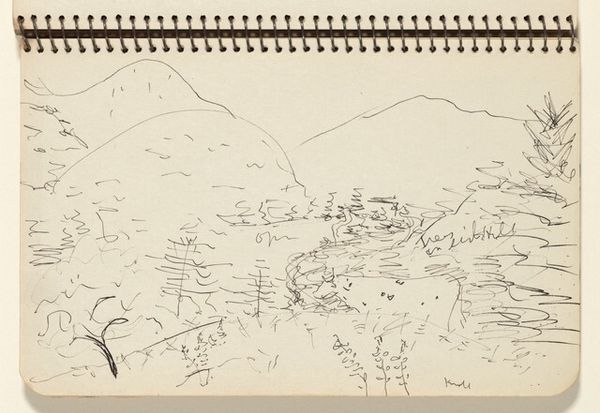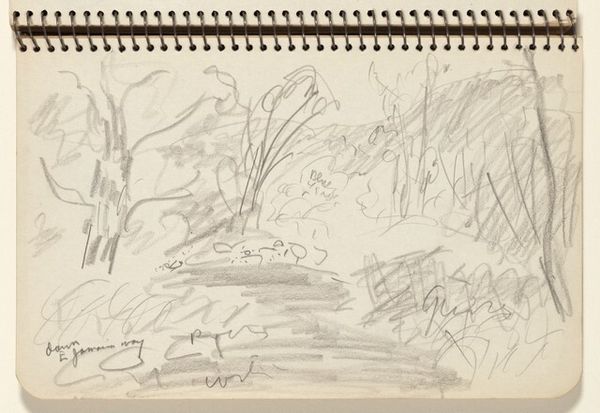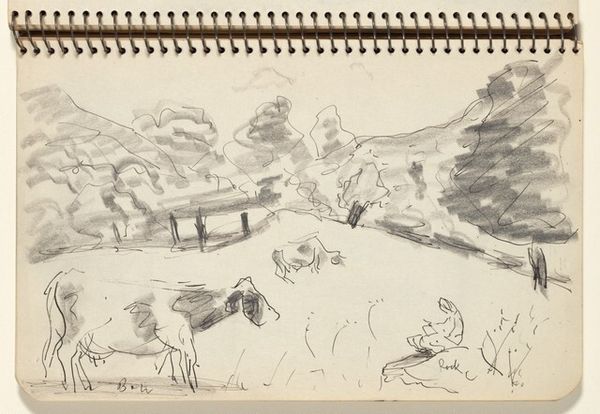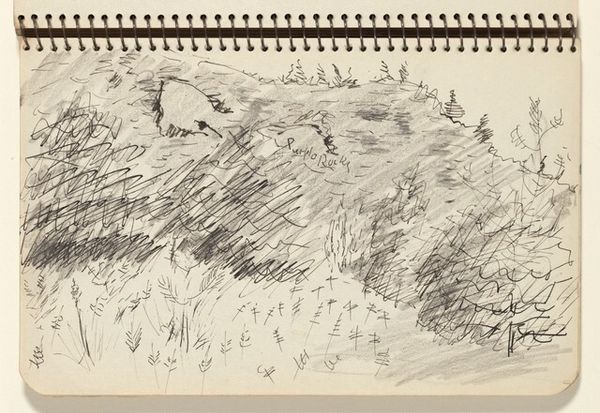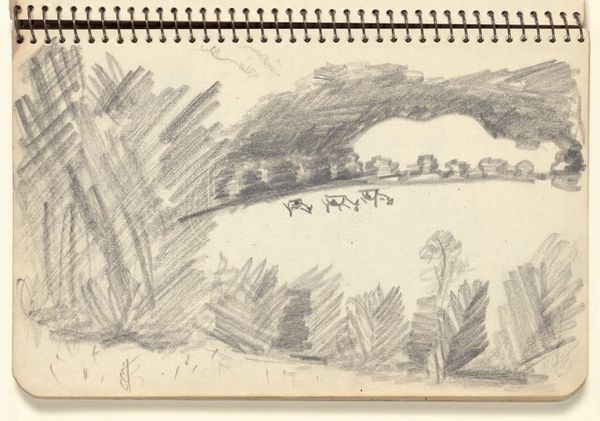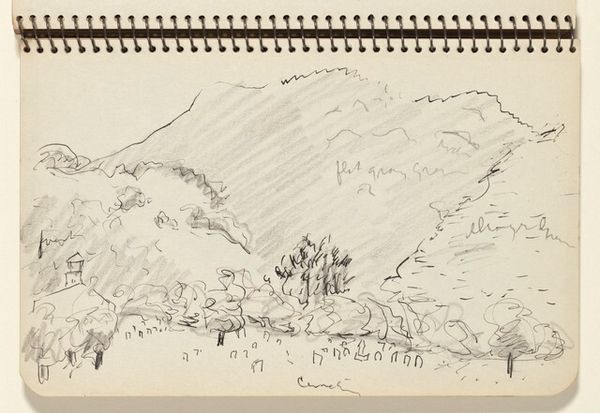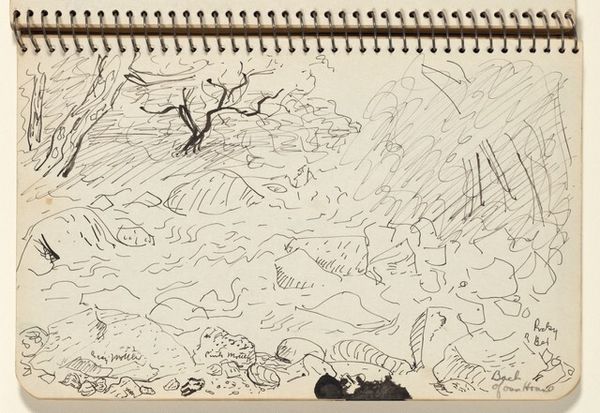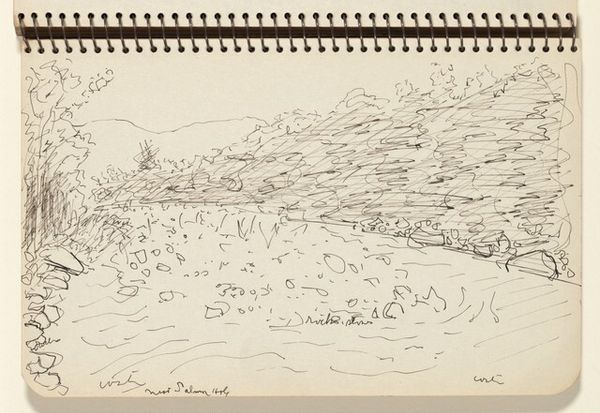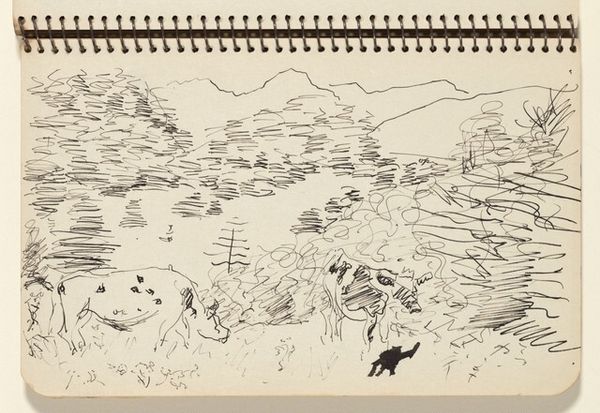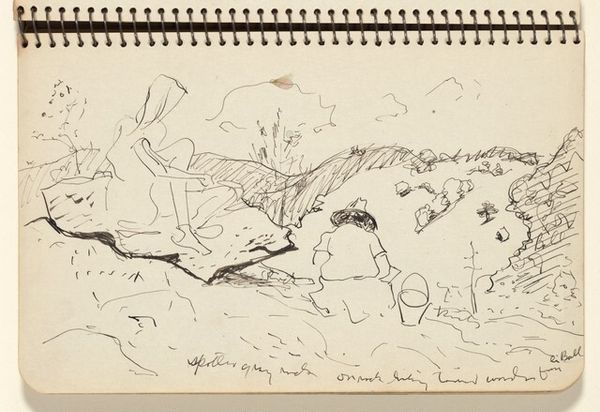
drawing, pencil, graphite
#
drawing
#
landscape
#
pencil
#
graphite
#
modernism
Dimensions: overall: 12.8 x 20 cm (5 1/16 x 7 7/8 in.)
Copyright: National Gallery of Art: CC0 1.0
Editor: This is Milton Avery’s “East Jamaica Road,” created in 1943. It’s a graphite and pencil drawing on paper. It has a real sketch-like quality; very immediate. What do you see in this piece? Curator: I see the power of suggestion in Avery's quick notations. In the context of 1943, while the world was consumed by conflict, consider the implications of representing the landscape so freely. It reminds me that even during times of immense political upheaval, the mundane – a roadside view – continues, offering a quiet counterpoint to the grand narratives of history. Editor: That’s interesting! It feels more like an escape. Why do you call it "political?" Curator: Not necessarily overtly political, but think about the institutions that supported and validated this kind of modernist representation. Were there patrons, galleries, or critical voices that championed art removed from direct social commentary? And what does that say about the perceived role of art in wartime society? Was it seen as escapism, resistance, or something else entirely? Editor: So you're saying that *not* being about the war *is* actually saying something? The choice of subject, like where it was exhibited or reviewed, would have meant something to people at the time? Curator: Exactly. We can examine how art like this was discussed, collected, and displayed to understand how it functioned within the cultural and political landscape of its time. Editor: That gives me a new perspective on this simple sketch. I’d only thought about how it looked! Curator: And now you see that its historical context helps us understand not just what it depicts but how it participated in a larger cultural conversation.
Comments
No comments
Be the first to comment and join the conversation on the ultimate creative platform.
